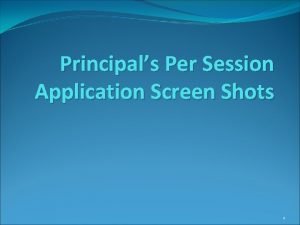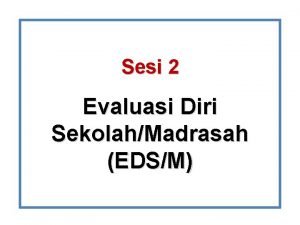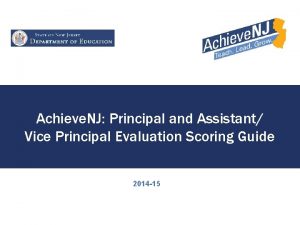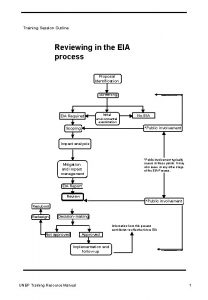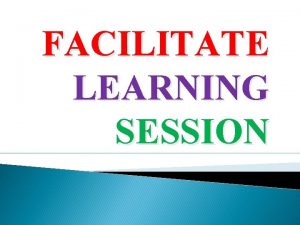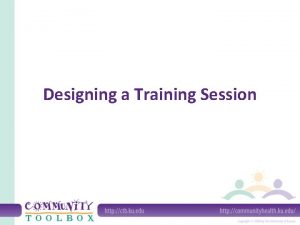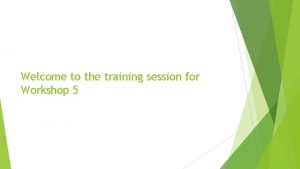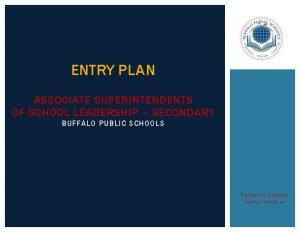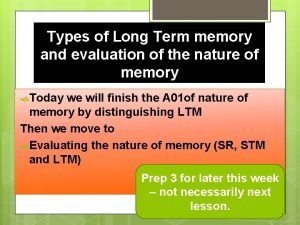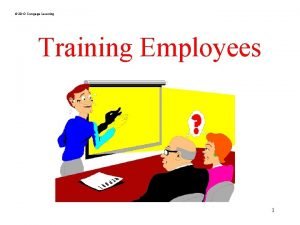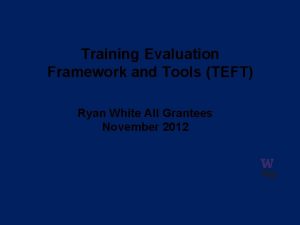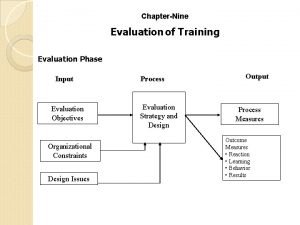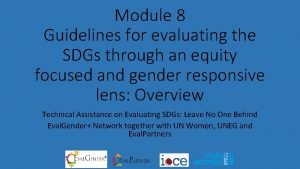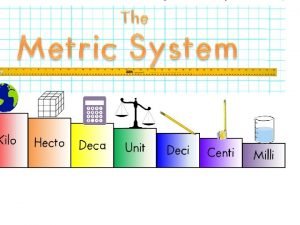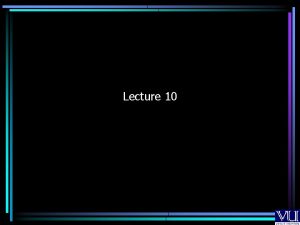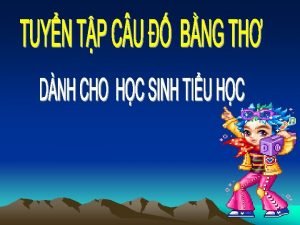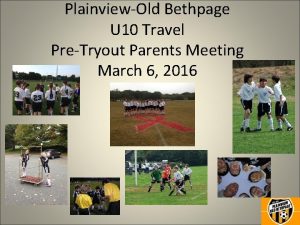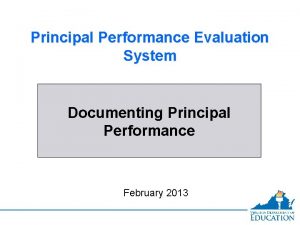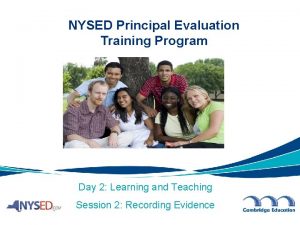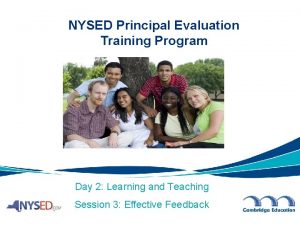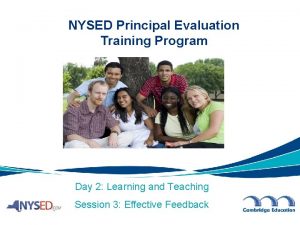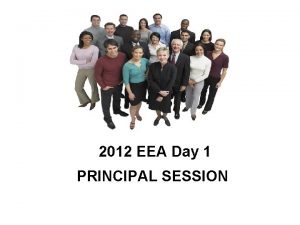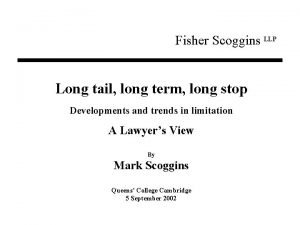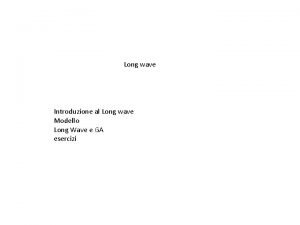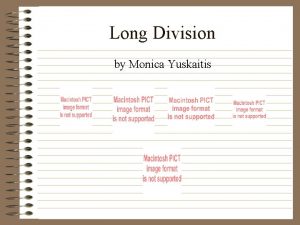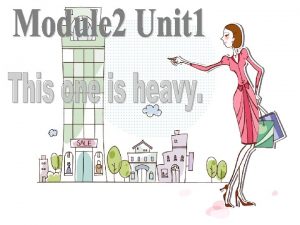Day Long Session Day 4 Principal Evaluation Training





































- Slides: 37

Day Long Session Day 4 Principal Evaluation Training March 12, 2012 Albany, NY

Who is in the room? • Welcome • Brief introductions 2

Goals for the Day By the end of the day, participants will be able to: • Align ISLLC Standard #1 to the Statute and analyze the implications of the different use of language in the three documents (ISLLC, Statute, and selected Rubric) in describing the standard. • Identify reliable, unbiased evidence about principal performance in ISLLC Standard 1, and on a particular rubric, based on fact. • Use a case study, to collect evidence, develop feedback for the principal and reflect on the quality and effectiveness of feedback. 3

60 points What are high impact goals that provide guidance to principals and change school practice? Results Practice Leads to Results 40 points 4

ISLLC Standard #1 An education leader promotes the success of every student by facilitating the development, articulation, implementation, and stewardship of a vision of learning that is shared and supported by all stakeholders. Functions: A. Collaboratively develop and implement a shared vision and mission B. Collect and use data to identify goals, assess organizational effectiveness, and promote organizational learning C. Create and implement plans to achieve goals D. Promote continuous and sustainable improvement E. Monitor and evaluate progress and revise plans * 2008 Educational Leadership Policy Standards- from the Council of Chief State School Officers 5

Goal Setting • When setting goals: – What should the principal consider? – How does the principal know that the goal is objective? 6

SMART Goals Specific Measurable Attainable Realistic Timely 7

SMART Goals More Specific: A specific goal has a much greater chance of accomplishment than a general goal. To set a specific goal, you must answer the six “W” questions: • *Who: Who is involved? • *What: What do I want to accomplish? • *Where: Identify a location. • *When: Establish a time frame. • *Which: Identify requirements and constraints. • *Why: Specific reasons, purpose or benefits of accomplishing the goal. http: //topachievement. com/smart. html 8

What is Objective Evidence? Teaching Learning Solutions defines ‘Objective Evidence’ as: Evidence that is quantifiable when appropriate, includes specific numbers and or references. The evidence is completely free of bias, opinions, summary statements and judgments. 9

TLS Observer Evidence Rubric 10

Activity 1: What does “good or objective” evidence look like at the school level? • Identify the context/place/event where evidence can be collected • Identify the Evidence • Provide an example of that evidence • Chart your findings 11

Case Study- School Goal # 2 80% of the Teachers will attend at least 4 Data Analysis meetings by the end of the school year and will learn now to effectively participate in data analysis meetings and use the results of the analysis to improve the practice. ” 12

Identify “good or objective” Evidence from the Case Study Identify the context/place/event where evidence can be collected What is the evidence? Provide an example of that evidence How does the evidence satisfy the statute/ISLLC Standard #1 and the Rubric? 13

Turnkey check list What are the key takeaways from this activity? • the purpose of this activity is to identify the many places one can collect evidence and to recognize that evidence can appear in many different formats…. . through conversation, data, observation, etc. Which goal (s) does this activity address? • Align ISLLC Standard #1 to the Statute and analyze the implications for the different uses of language in the three documents (ISLLC, Statute and their selected Rubric) in describing the standard. • Identify reliable, unbiased evidence about principal performance in ISLLC Standard 1, and on a particular rubric, based on fact. In your role, what additional materials or information would you need to turnkey this activity? 14

Activity 2: The Case Study Benjamin Franklyn Middle School • The Benjamin Franklyn Middle School Case Study • Take 15 minutes to skim through the case study • The purpose of this quick review is to get a sense of what the case is about, what artifacts may be used as evidence, and which standards the artifacts address 15

Case Study Orientation • Case Study Review – What assumptions/predictions did you make in the case study? – What questions do you have about the case study? 16

Turnkey check list What are the key takeaways from this activity? • The purpose of part 1 of activity #2 is to do a pre-reading that allows for the participant to begin to familiarize him/herself with the case study • The purpose of part 2 of activity #2 is to assess the participants’ understanding of the case study and to surface questions and assumptions about the case study. Which goal does this activity address? • Align ISLLC Standard #1 to the Statute and analyze the implications of the different use of language in the three documents (ISLLC, Statute and your selected Rubric) in describing the standard. • Identify reliable, unbiased evidence about principal performance in ISLLC Standard 1, and on a particular rubric, based on fact. • Use a case study, to collect evidence, develop feedback for the principal and reflect on the quality and effectiveness of your feedback. In your role, what additional materials or information would you need to turnkey this activity? 17

Case Study Review • Three goals in the case study that were collaboratively set by the superintendent and the principal: • Goal #1 - Teachers will effectively implement one Common Core Shift in ELA and one in Math: – ELA/Literature- 5 of the 6 ELA teachers will effectively implement Shift #4 - ‘Text Based Answers’ in at least one unit each semester – Math- 8 of 8 math teachers will effectively implement Shift #1 - ‘Focus’ in at least one unit each semester • Goal # 2 - 80% of the Teachers will attend at least 4 Data Analysis meetings by the end of the school year and will learn how to effectively participate in data analysis meetings and use the results of the analysis to improve their practice • Goal # 3 - The school community will be one where teachers and students feel safe to take intellectual risks and being “wrong” is part of development 18

ELA Shift 4 - Text-Based Answers • Shift 4 Text-Based Answers- Students have rich and rigorous conversations which are dependent on a common text. Teachers insist that classroom experiences stay deeply connected to the text on the page and that students develop habits for making evidentiary arguments both in conversation, as well as in writing to assess comprehension of a text. 19

Math Shift # 1 - Focus • Shift 1 - Focus: Teachers use the power of the eraser and significantly narrow and deepen the scope of how time and energy is spent in the math classroom. They do so in order to focus deeply on only the concepts that are prioritized in the standards so that students reach strong foundational knowledge and deep conceptual understanding and are able to transfer mathematical skills and understanding across concepts and grades. 20

Activity 3: Deeper Look at the Case Study. Collecting Evidence – Dive deeper into the case study by carefully reviewing the artifacts and identifying the evidence in the artifacts that satisfies one of the principal evaluator rubrics, and addresses one of the three goals. – Use the worksheet provided for the principal evaluation rubric you selected to record the evidence. – Chart your findings and prepare to share 21

Turnkey check list What are the key takeaways from this activity? • The purpose of activity #3 is to do a more in-depth reading of the case study and the artifacts presented in the appendices, and provide an opportunity to use the rubric selected by the district. Which goal does this activity address? • Align ISLLC Standard #1 to the Statute and analyze the implications of the different use of language in the three documents (ISLLC, Statute and their selected Rubric)in describing the standard. • Identify reliable, unbiased evidence about principal performance in ISLLC Standard 1, and on a particular rubric, based on fact. • Use a case study, to collect evidence, develop feedback for the principal and reflect on the quality and effectiveness of their feedback. In your role, what additional materials or information would you need to turnkey this activity? 22

Activity 4: Case Study Evidence Collection Goal # 1 Rubric: Marzano ISLLC Standard Objective evidence How is this aligned to the language of the #1 Indicator ABCDE (which appendix) principal evaluation rubric Marzano 1 A&B 1. Staff Meeting Agenda & Minutes Marzano Domain 2. 1, Indicator 1: A written Domain 2. 1: (9/19; App P, p. 47) record that Pat document articulating the school-wide model of explains the 3 school goals, instruction is in place School Admin resources for CC shifts, provides a responsibilities of teachers for shifts. Marzano Domain 2. 1, Indicator 2: PD clear vision as 2. Staff Meeting Agenda & Minutes opportunities are provided for new teachers to how (10/24, App P, p. 49) list CC shifts regarding the school-wide model of instruction on agenda, principal explains shifts should be and shows 12 -minute video on ‘Text addressed based Answers. ’ 3. 2008 Math & ELA Scopes (pp. (School Goal 1: 70 -87) list SLOs per grading period. CC Shift) 23

Activity 4: Case Study Evidence Collection Goal # 3 Rubric: Marzano Indicator Marzano 4. 4: School Admin ensures teachers/staff have formal ways to provide input 4. 5: School Admin ensures that stucents and parents have formal ways to provide input ISLLC Standard #1 ABCDE 1 B Objective evidence How is this aligned to the language of the principal (which appendix) evaluation rubric 1. Research based surveys Marzano Domain 4. 4, Indicator 1: Data collection (Tripod) have been systems are in place to collect opinion data from administered in 2010 & 2011 teachers and staff regarding the optimal to teachers and students (App functioning of the school. M, pp 32 -36) Marzano Domain 4. 5, Indicator 1: Data collection 2. Research based surveys systems are in place to collect opinion data from collect data about students and parents regarding the optimal attitudes regarding teachers’ functioning of the school “care” and “correcting mistakes” (App M, pp 34 -35) (School Goal 3: Safety to take intellectual risks and being “wrong is part of development) 24

Turnkey check list What are the key takeaways from this activity? • The purpose of activity 4 is to provide the participant with an opportunity to review different artifacts collected at a school, determine the use and objectivity of that evidence, and align it to the ISLLC Standard and Rubrics. Which goal does this activity address? • Align ISLLC Standard #1 to the Statute and analyze the implications of the different use of language in the three documents (ISLLC, Statute and their selected Rubric) in describing the standard. • Identify reliable, unbiased evidence about principal performance in ISLLC Standard 1, and on a particular rubric, based on fact. • Use a case study, to collect evidence, develop feedback for the principal and reflect on the quality and effectiveness of their feedback. In your role, what additional materials or information would you need to turnkey this activity? 25

Activity 5: Role Play • Observe the role play between the principal and the teacher • Take notes • When listening to the role play, keep in mind • What kind of evidence do you expect to see during the role play? • Which Function of ISLLC Standard one do you expect would be addressed in the discussion? 26

Activity 6: Collecting Evidence from the Role Play Goal # _______ Rubric: _______ Indicator ISLLC Standard #1 Objective evidence How is this aligned to the language ABCDE (which appendix) of the principal evaluation rubric 27

Turnkey check list What are the key takeaways from this activity? • The purpose of activity 6 is to provide the participant with an opportunity to collect evidence using role play by observing a common event at the school level. Which goal does this activity address? • Align ISLLC Standard #1 to the Statute and analyze the implications of the different use of language in the three documents (ISLLC, Statute and their selected Rubric)in describing the standard. • Identify reliable, unbiased evidence about principal performance in ISLLC Standard 1, and on a particular rubric, based on fact. • Use a case study, to collect evidence, develop feedback for the principal and reflect on the quality and effectiveness of their feedback. In your role, what additional materials or information would you need to turnkey this activity? 28

Appendix M: Teacher and Student Survey results • Use Appendix M- Student/Teacher survey results for this activity. • The data represented in the Appendix presents information on Benjamin Franklyn Middle School. The questions are drawn from Tripod Project surveys of students and teachers about leadership, teaching effectiveness, classroom learning environments and student engagement. • Point participants to Appendix M 1 29

Tripod Student Survey- The 7 C’s 1. Caring about students (Encouragement and Support) 2. Controlling behavior (Press for Cooperation and Peer Support) 3. Clarifying lessons (Success Seems Feasible) 4. Challenging students (Press for Effort, Perseverance and Rigor) 5. Captivating students (Learning seems Interesting and Relevant) 6. Conferring with students (Students Sense their Ideas are Respected) 7. Consolidating knowledge (Ideas get Connected and Integrated) 30

Activity 7: Using Student and Teacher Data Survey Evidence • First, describe to one another what your general thoughts are in reference to your observation of the data. What does the data tell you? • Based on the data, what concerns you most? • Based on the data, what concerns you the least? • What questions would you ask during a school visit (after seeing this data)? • What would you look for during a school visit? • What would you ask the school’s leader to work on as priorities? 31

Turnkey check list What are the key takeaways from this activity? • The purpose of activity 7 is to provide participants with an opportunity to review student and teacher surveys to find appropriate evidence that can be used to support the evaluation of a principal. Which goal does this activity address? • Identify reliable, unbiased evidence about principal performance in ISLLC Standard 1, and on a particular rubric, based on fact. • Use a case study, to collect evidence, develop feedback for the principal and reflect on the quality and effectiveness of their feedback. In your role, what additional materials or information would you need to turnkey this activity? 32

Activity 8: Preparing for the Unannounced Visit • In table groups, discuss and agree on the response to the following three questions – What information do you have? – What information do you still need? – What are some of the things you would look for on an unannounced visit to BFMS? • Chart your responses • Be prepared to present 33

Preparing for the Unannounced Visit What information do you have? What information do you still need? What are some of the things you would look for in an unannounced visit to BFMS? 34

Turnkey check list What are the key takeaways from this activity? • The purpose of activity #8 is for participants to reflect on the information reviewed for the case study and determine what additional information participants need to evaluate the principal in the case study. Which goal does this activity address? • Align ISLLC Standard #1 to the Statute and analyze the implications of the different use of language in the three documents (ISLLC, Statute and their selected Rubric) in describing the standard. • Identify reliable, unbiased evidence about principal performance in ISLLC Standard 1, and on a particular rubric, based on fact. • Use a case study to collect evidence, develop feedback for the principal and reflect on the quality and effectiveness of their feedback. In your role, what additional materials or information would you need to turnkey this activity? 35

Key Points of this Session • Align ISLLC Standard #1 to the Statute and analyze the implications of the different use of language in the three documents (ISLLC, Statute and their selected Rubric) in describing the standard. • Identify reliable, unbiased evidence about principal performance in ISLLC Standard 1, and on a particular rubric, based on fact. • Use a case study, to collect evidence, develop feedback for the principal and reflect on the quality and effectiveness of their feedback. 36

Feedback on Today + 37
 Day 1 day 2 day 3 day 4
Day 1 day 2 day 3 day 4 Tall+short h
Tall+short h Once upon a time there was a little girl
Once upon a time there was a little girl Per session form
Per session form Eds m
Eds m Nj achieve principal evaluation
Nj achieve principal evaluation Day 1 day 2 day 817
Day 1 day 2 day 817 Training session outline
Training session outline Facilitate learning session meaning
Facilitate learning session meaning Training session design
Training session design Welcome to the training session
Welcome to the training session Talk boost tracker
Talk boost tracker Opening prayer for training session
Opening prayer for training session Sabatino cimato
Sabatino cimato Types of ltm
Types of ltm Training evaluation
Training evaluation What is teft
What is teft What are the inputs into the evaluation phase of training?
What are the inputs into the evaluation phase of training? Training evaluation design
Training evaluation design Long time ago people
Long time ago people Long long ago there was a king story
Long long ago there was a king story Poem about tinikling
Poem about tinikling Once upon a time and long ago
Once upon a time and long ago Long long int c
Long long int c Greek
Greek Sóc nhí câu đố
Sóc nhí câu đố Once upon a long time ago
Once upon a long time ago Vua nào xuống chiếu dời đô
Vua nào xuống chiếu dời đô Plainview old bethpage soccer
Plainview old bethpage soccer Angiospermophytes
Angiospermophytes Long day's journey into night
Long day's journey into night Long days journey into night quotes
Long days journey into night quotes Training is expensive without training it is more expensive
Training is expensive without training it is more expensive Perbedaan on the job training dan off the job training
Perbedaan on the job training dan off the job training Aggression replacement training facilitator training
Aggression replacement training facilitator training Schoolmax login
Schoolmax login Ocean the part day after day
Ocean the part day after day Day to day maintenance
Day to day maintenance



